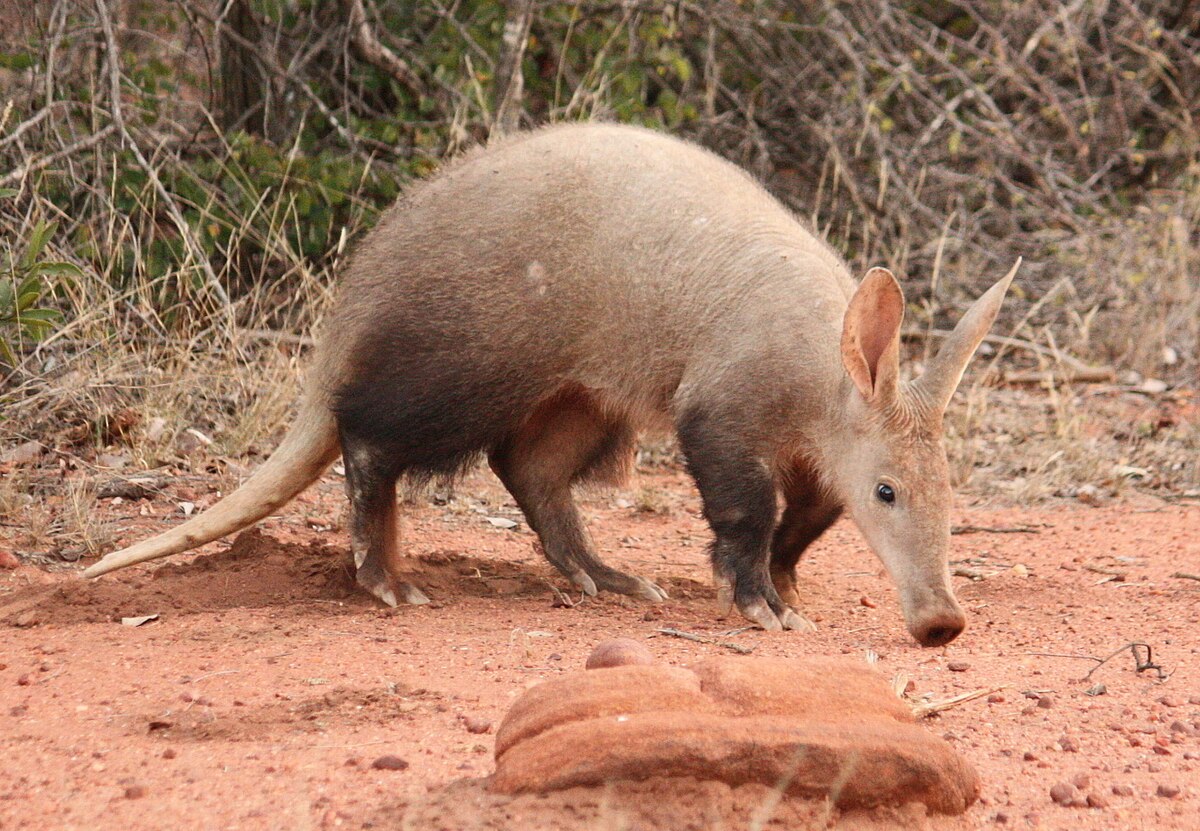
Did you know that aardvarks are nocturnal creatures with a taste for termites? These fascinating animals, native to Africa, have some unique traits that set them apart. With their long snouts and sticky tongues, they can devour thousands of insects in one night. Aardvarks also have powerful claws perfect for digging burrows, which they use for shelter and to escape predators. Despite their pig-like appearance, they are more closely related to elephants! Their name comes from the Afrikaans/Dutch word for "earth pig." Ready to learn more about these incredible creatures? Here are 36 facts that will blow your mind!
What is an Aardvark?
Aardvarks are fascinating creatures that often fly under the radar. Native to Africa, these nocturnal animals have some pretty unique characteristics. Let's dive into some interesting facts about aardvarks.
- Aardvarks are nocturnal: They sleep during the day and come out at night to hunt for food.
- Name origin: The name "aardvark" comes from the Afrikaans/Dutch language and means "earth pig."
- Not related to pigs: Despite their name, aardvarks are not related to pigs. They belong to their own order called Tubulidentata.
- Insectivores: Aardvarks primarily eat ants and termites, using their long tongues to capture their prey.
- Powerful diggers: They have strong claws that allow them to dig through tough soil to reach insect nests.
- Long tongues: Their tongues can be up to 12 inches long, perfect for reaching deep into ant hills and termite mounds.
- Solitary animals: Aardvarks prefer to live alone and only come together to mate.
- Excellent sense of smell: They have a keen sense of smell to locate insects underground.
- Burrow builders: Aardvarks dig extensive burrows where they sleep and escape from predators.
- Thick skin: Their skin is tough and helps protect them from insect bites and predators.
Physical Characteristics of Aardvarks
Aardvarks have some unique physical traits that set them apart from other animals. Here are some interesting facts about their appearance and anatomy.
- Pig-like snout: Their snouts are long and pig-like, which helps them sniff out insects.
- Large ears: They have large, rabbit-like ears that provide excellent hearing.
- Sparse hair: Aardvarks have sparse, coarse hair covering their bodies.
- Webbed feet: Their feet are partially webbed, aiding in digging.
- Strong limbs: Their limbs are muscular and powerful, perfect for digging.
- Tail: Aardvarks have a thick, muscular tail that helps balance them while digging.
- Teeth: They have unique, tubular teeth that continuously grow throughout their lives.
- Small eyes: Their eyes are small and adapted for nocturnal vision.
- Flexible snout: Their snout is highly flexible, allowing them to navigate through tight spaces.
- Body size: Aardvarks can grow up to 4 feet long and weigh between 110-180 pounds.
Aardvark Behavior and Lifestyle
Understanding how aardvarks live and behave can give us a deeper appreciation for these unique animals. Here are some intriguing facts about their behavior and lifestyle.
- Nocturnal foraging: They spend their nights foraging for ants and termites.
- Burrow sharing: Sometimes, other animals like warthogs and porcupines use abandoned aardvark burrows.
- Territorial: Aardvarks are territorial and mark their areas with scent glands.
- Mating season: Mating usually occurs during the rainy season when food is abundant.
- Gestation period: The gestation period for aardvarks is about seven months.
- Single offspring: Typically, aardvarks give birth to one offspring at a time.
- Parental care: Mothers take care of their young for about six months before they become independent.
- Lifespan: In the wild, aardvarks can live up to 18 years.
- Predators: Lions, leopards, and hyenas are some of the main predators of aardvarks.
- Escape tactics: When threatened, aardvarks can dig rapidly to escape predators.
Aardvarks in Culture and Conservation
Aardvarks have also made their mark in culture and conservation efforts. Here are some facts about their role in these areas.
- Cultural significance: In some African cultures, aardvarks are considered symbols of perseverance and hard work.
- Cartoon fame: The aardvark character in the cartoon "The Ant and the Aardvark" brought some fame to these animals.
- Conservation status: Aardvarks are currently listed as "Least Concern" by the IUCN, but habitat loss poses a threat.
- Habitat: They are found in various habitats, including savannas, grasslands, and woodlands.
- Ecosystem role: Aardvarks play a crucial role in their ecosystem by controlling insect populations.
- Research importance: Studying aardvarks can provide insights into the health of their habitats and the impact of environmental changes.
The Final Word on Aardvarks
Aardvarks are fascinating creatures with unique traits. From their powerful claws to their termite-heavy diet, these nocturnal animals play a crucial role in their ecosystems. Their burrowing habits help aerate the soil, benefiting plant life and other animals. Despite their somewhat odd appearance, aardvarks are well-adapted to their environment, showcasing nature's ingenuity.
Understanding these animals helps us appreciate biodiversity and the delicate balance of ecosystems. Aardvarks might not be the most famous animals, but their contributions are significant. Next time you think about wildlife, remember the humble aardvark and its vital role in nature.
So, whether you're a wildlife enthusiast or just curious, knowing about aardvarks enriches your knowledge of the animal kingdom. Keep exploring and learning about the amazing creatures that share our planet.
Was this page helpful?
Our commitment to delivering trustworthy and engaging content is at the heart of what we do. Each fact on our site is contributed by real users like you, bringing a wealth of diverse insights and information. To ensure the highest standards of accuracy and reliability, our dedicated editors meticulously review each submission. This process guarantees that the facts we share are not only fascinating but also credible. Trust in our commitment to quality and authenticity as you explore and learn with us.
